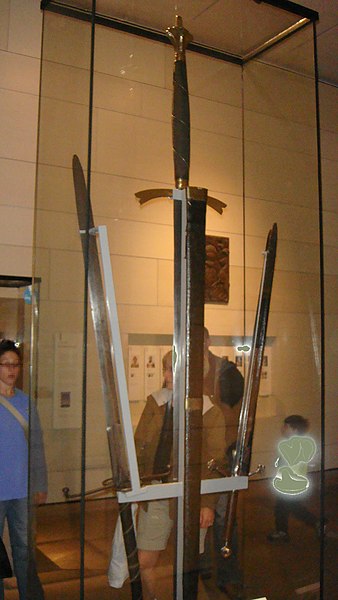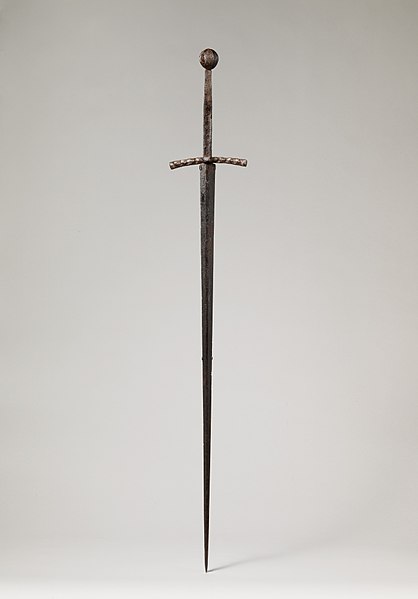A claymore is either the Scottish variant of the late medieval two-handed sword or the Scottish variant of the basket-hilted sword. The former is characterised as having a cross hilt of forward-sloping quillons with quatrefoil terminations and was in use from the 15th to 17th centuries.
16th century claymore in the National Museum of Scotland.
Engraving of a claymore and armour at Dunvegan Castle (from Footsteps of Dr. Johnson, 1890).
The seal of John Balliol
Over-sized sword, likely a bearing sword, situated next to two normal-sized claymores for scale
A longsword is a type of European sword characterized as having a cruciform hilt with a grip for primarily two-handed use, a straight double-edged blade of around 80 to 110 cm, and weighing approximately 1 to 1.5 kg.
Hand-and-a-half sword, probably German, c. 1400–1430
Replica of the Brescia Spadona, a 15th Century "hand and a half" longsword named after the city where it now resides, in the Museo Civico L. Mazzoli in Brescia, Italy. It has a tapered type XVIIIa or type XVIa blade and an octagonal pommel.
1440s illustration of one- and two-handed use of the longsword. Note the sword being used one-handed is drawn shorter and may also be intended as a large knightly sword (CPG 339 fol. 135r).
Example of two handed use vs. half-sword, dating to c. 1418 (CPG 359, fol. 46v).








